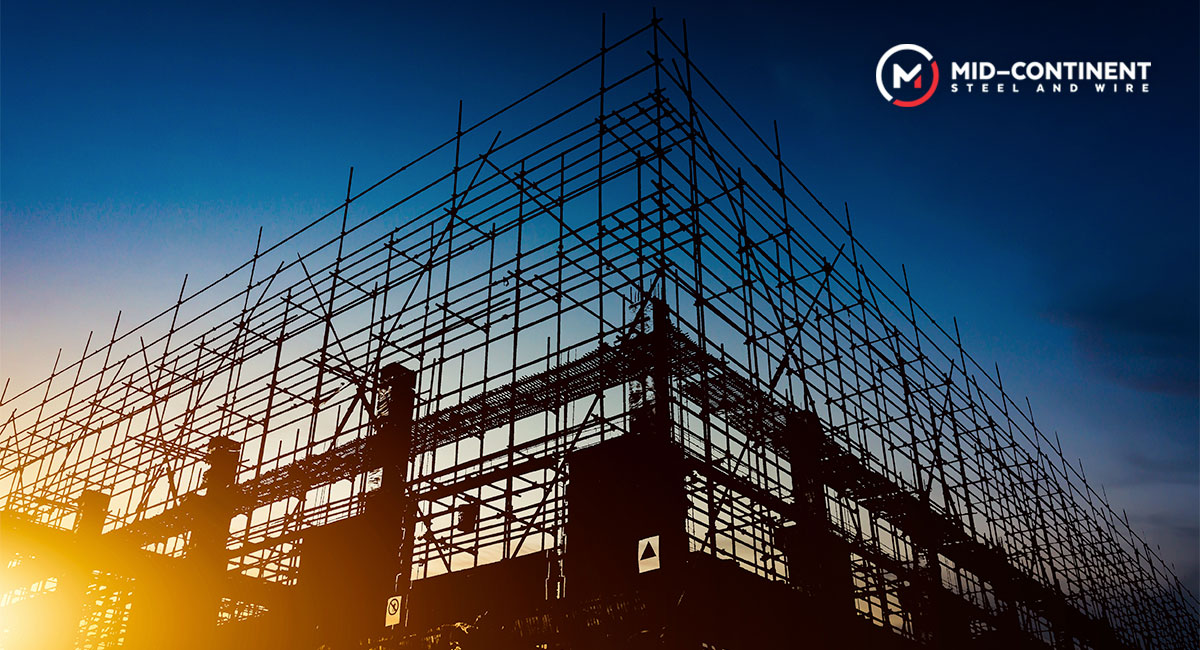
In construction and engineering, steel is an essential material for creating strong and durable structures. It’s essential to understand that steel is available in various types, each tailored for particular applications. Among the most frequently used are structural steel and reinforcing steel, both serving distinct purposes in building projects. Let’s explore how these structural components differ.
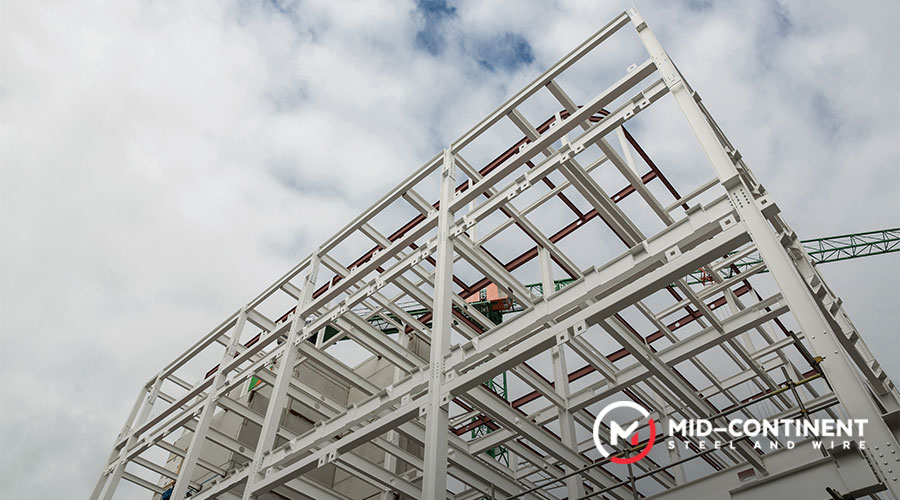
Structural steel: the backbone of buildings
Structural steel is a metal alloy mainly made from iron and carbon, along with trace amounts of other elements such as manganese, silicon, and copper. This specific blend provides structural steel with its well-known strength and adaptability. Structural steel construction includes a variety of shapes and forms, beams, columns, channels, angles, plates, and more.
Some of the main characteristics of structural steel are:
- High tensile strength
- Excellent ductility that allows it to bend without breaking
- Good weldability for easy fabrication
According to the American Institute of Steel Construction (AISC), structural steel accounts for about 46% of steel used in construction projects in the United States.
Reinforcing steel: strengthening concrete
Reinforcing steel, commonly known as rebar, is specifically engineered to complement concrete. It is usually composed of carbon steel and features a ridged surface to improve its grip within the concrete, providing a stronger bond.
These are some of the strengths it bring to construction projects:
- High yield strength
- Excellent bond strength with concrete
- Corrosion resistance
A study by the Concrete Reinforcing Steel Institute found that reinforced concrete structures can last over 100 years with proper design and maintenance.
Roles and applications
Structural steel: This type of steel serves as the main support component in a wide range of construction projects, providing the essential framework that carries the overall weight of a structure. Known for its high strength and durability, structural steel is fundamental in the stability and integrity of steel buildings and infrastructure.
It is commonly used in various applications, such as:
- Building frames and skyscrapers
- Bridges and overpasses
- Industrial facilities and warehouses
- Large-span structures like stadiums and convention centers
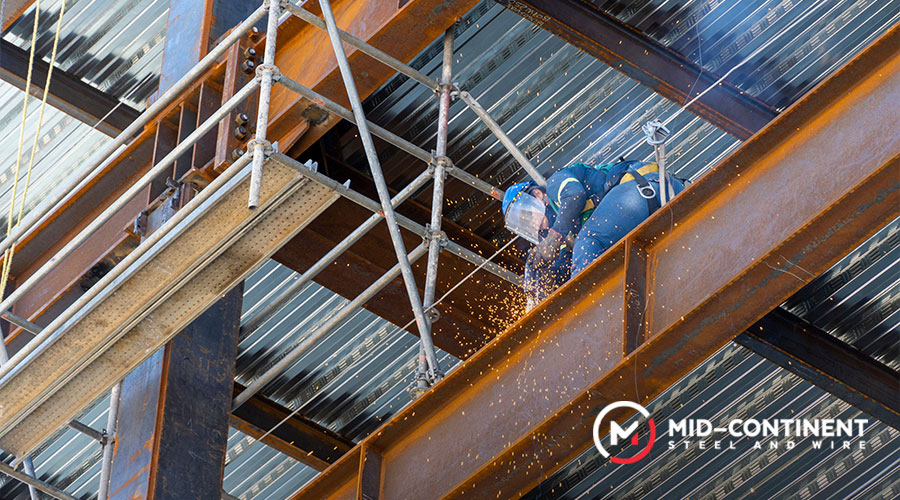
Reinforcing steel: This material plays a vital role within concrete structures by supplying the tensile strength. While concrete is strong in compression, it is relatively weak in tension, reinforcing steel addresses this limitation by absorbing tensile forces and helping to distribute loads more evenly. It also minimizes the risk of cracking and structural failure over time.
Typical uses of reinforcing steel include:
- Foundations and slabs
- Columns and beams
- Retaining walls
- Roads and highways
- Underground structures
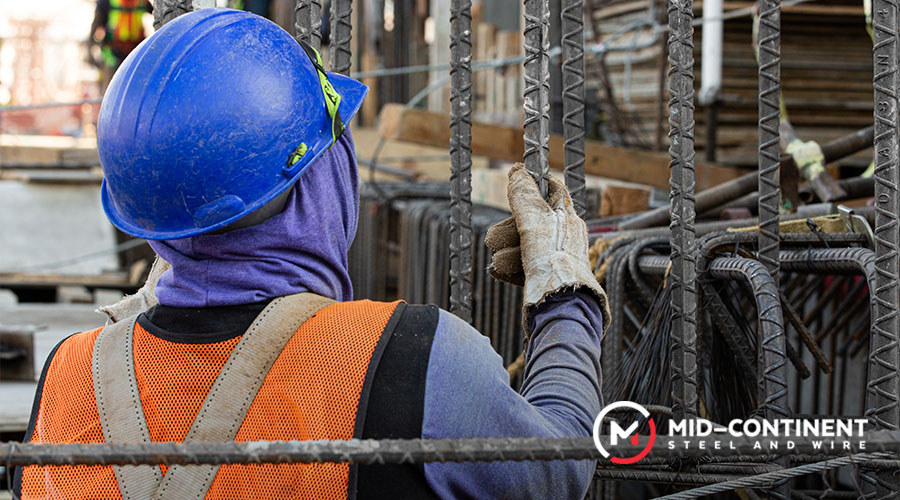
Choose the right steel for your project
Understanding the differences between structural steel and reinforcing steel is crucial for making informed decisions in construction projects. While structural steel forms the visible framework of many buildings and bridges, reinforcing steel provides hidden strength to concrete structures.
The choice between these two types of steel depends on various factors, including:
- The type of structure being built
- Load-bearing requirements
- Environmental conditions
- Budget constraints
- Local building codes and regulations
For best results, consult with structural engineers and steel specialists to determine the most appropriate type of steel for your specific project.
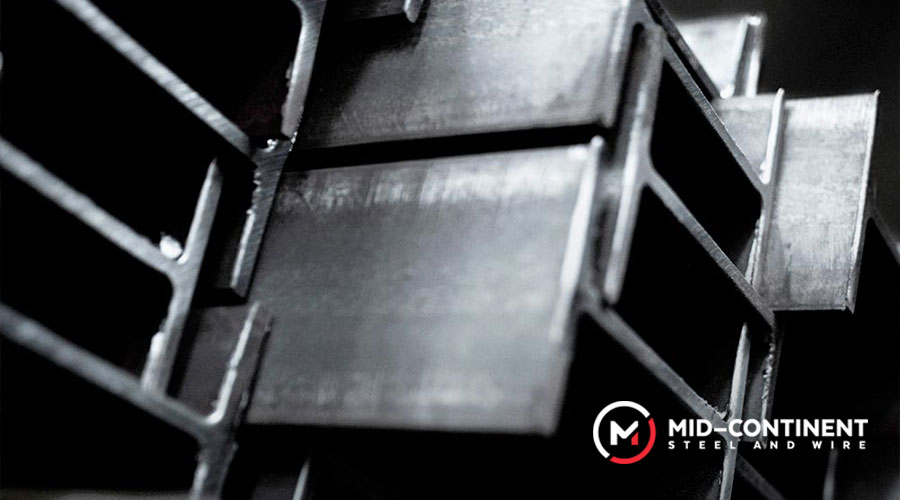
Mid-Continent Steel and Wire solutions
When selecting construction materials, quality, reliability, and service are non-negotiable. Mid Continent Steel and Wire checks all these boxes, and more!
1. Industry-leading product range
We offer an extensive line of products tailored for construction, including:
- Reinforcing steel (rebar)
- Structural wire mesh
- Nails and fasteners
- Wire rod and drawn wire
Whether you’re working on residential, commercial, industrial, or infrastructure projects, their product catalog is built to support a wide variety of applications with precision and reliability.
2. Unmatched product quality
All products are manufactured under rigorous quality control protocols. Mid Continent’s steel products consistently meet or exceed ASTM standards, ensuring they perform exceptionally under the pressures and stresses of modern construction. This level of quality directly translates to safer, longer-lasting structures.
4. Exceptional customer service and technical support
We aren’t just a supplier, we’re a partner! Our team of experts works closely with contractors, engineers, and project managers to provide:
- Technical consultation
- Product selection advice
- Custom fabrication services (where applicable)
- Troubleshooting and on-site support
5. Cost-effective solutions
Thanks to their efficient manufacturing processes and domestic logistics, we bring competitive pricing without compromising on quality. This helps keep your project within budget while still meeting the highest construction standards.
6. Sustainability and responsibility
We are committed to reducing our environmental impact through energy-efficient processes, recycling initiatives, and environmentally friendly sourcing. If your project has green building goals, our products can contribute to earning points through sustainable material sourcing and local manufacturing.
7. Experience
With decades in the industry and a legacy of dependable service, we have become a name synonymous with integrity and excellence. Thousands of contractors, developers, and engineers trust our products to support structures nationwide.
Check out our catalog of products!

